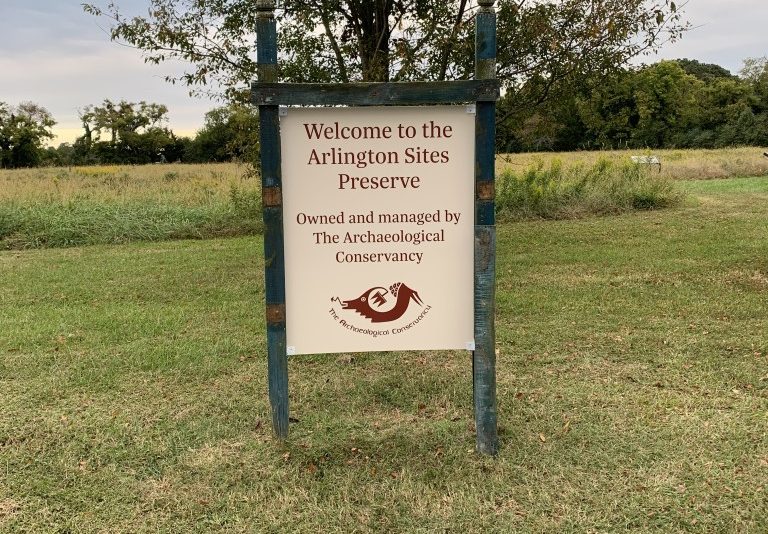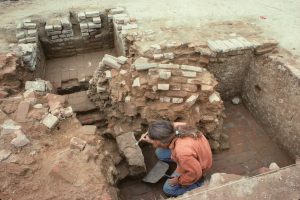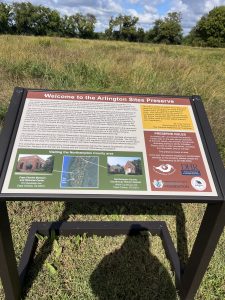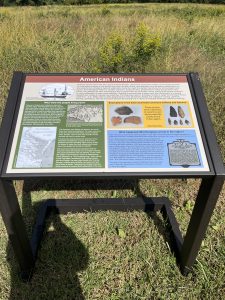On the thin strip of land that comprises Virginia’s eastern shore lies the Arlington property, which contains important sites for understanding the region’s history from pre-contact Native American settlement through the nineteenth century. The 7.3-acre property and adjacent cemetery reside along the southern shore of Old Plantation Creek, where an open field covers the archaeological remains of sites associated with Native settlement, the Virginia Company of London, a joint-stock company that sponsored the colonization of Virginia from 1607-1624, and the Custis family.
Archaeological investigations in the area began in the 1980s when concerns of a proposed subdivision prompted the Virginia Department of Historic Resources to ask the developer for permission to conduct a survey. This survey revealed a number of areas with Native American deposits, including a shell midden, pit features, and burials. It is possible that this habitation was part of an Accawmack village, the group of Native Americans who lived in the area at the time of European arrival. On his 1612 map of the Chesapeake Bay, John Smith recorded such a site close to the Arlington property. In addition to these deposits, the survey resulted in the identification of a number of significant historic sites.







